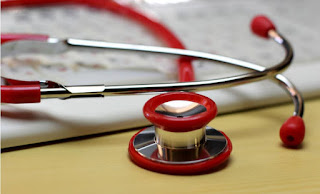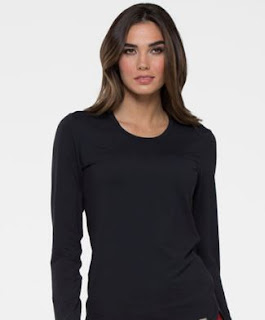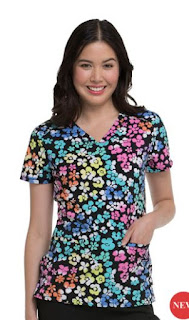The Stethoscope - Then & Now
By Jordie Papa
 |
| Image courtesy of torange.biz |
The most recognizable medical diagnostic tool on Earth
has been used for everything from listening to the rhythm of the heart, to
eavesdropping on what’s been said next door.
Yet if you ask most medical professionals where the venerable
stethoscope originated, they’ll be hard pressed to answer your question, let
alone name the French physician who is credited as inventing the device.
Before
the stethoscope, there was the ear.
Before the nineteenth century, the only way to listen to what was going on inside a patient’s chest was to apply the ear. The shortcoming of this technique meant that the resultant sound was not amplified. As a result, it was quite possible to miss sounds that were associated with illness. It also required the physician to be in intimate contact with the patient, which could also pose a problem, particularly if the patent happened to be of the opposite sex.
So ingrained was the sense of propriety during the
1800’s, that some physicians were reluctant to conduct a though
examination. Such was the case in 1815,
when Dr. Rene Laennec found himself reluctant to perform a chest exam on a
young female patient. To avoid having to
touch the patient, the physician rolled-up several sheets of paper to listen to
the patient’s chest. Not only were her
heart sounds clearly audible through the tube, but he found they were
amplified. Excited at this result, he
began to experiment with other materials and it wasn’t long before Laennec’s first
stethoscope was invented. (He is also
credited with naming the stethoscope by combining the Greek word for chest
(stethos) with skopein, which means to view.)
 |
| Image by wikimedia |
Looking more like an ear trumpet used by patients who
were hard of hearing, the monaural wooden device was placed on the patient’s
chest, with the physician cocking his head to one side to listen to sounds
emanating from the thorax. While the use
of the device was a bit more awkward than modern binaural stethoscopes, it far
out performed the ear. It wasn’t until
1851 when the first stethoscope designed for both ears was pioneered by Irish
physician, Arthur Leared.
The first commercial stethoscopes came out a year or
so later, after New York MD, George Cammann not only refined Dr. Leared’s
binaural design, he also published an essay extolling the virtues of the new
and improved device, entitled On Variations in Pitch in Percussion and
Respiratory Sounds and their Application to Physical Diagnosis. (Try saying
that 3 times fast.)
While some physicians of the era speculated that using
two ears as opposed to one could actually create auditory imbalances that could
affect diagnosis, by the turn of the century these concerns had all but
vanished. While binaural stethoscopes of the period would be easily recognized
by modern healthcare professionals, they were heavier and more awkward to wield
than their modern counterparts.
Stethoscope
Technology of the 20th Century
Believe it or not, the next hundred years after the
introduction of the binaural stethoscope saw relatively little progress. Other than making the instrument lighter and
more flexible, modern stethoscopes don’t look all that different from those
made during the 1930’s. However, the
introduction of electronic amplification and noise filtering now allow modern
physicians to hear internal sounds that stethoscopes of yesteryear were
incapable of producing.
 |
| Image courtesy of Melnick Medical Museum |
It wasn’t until the early 1990’s that anyone really took
note that stethoscope acoustics had essentially been the same since the first
binaural stethoscopes had been introduced 140 years before. That’s when Caltech grad student Clive Smith
decided to do something about it.
Founding Thinklabs in 1991, the company dedicated itself to the
development of electronics and signal processing for medical applications. After reviewing all of the stethoscope
literature he could lay his hands on (this was pre-Internet, after all), Smith
learned that electronic stethoscopes had been around since the 1880’s, when
Doctor Willem Einthoven placed a microphone in a stethoscope. While his invention of the Electrocardiogram
won him the Nobel Prize, his enhanced stethoscope wasn’t as universally
adopted.
Even in the early 1990’s, cardiologists still
complained that traditional stethoscopes were poor at amplifying heart
sounds. During one of his many all-night
brainstorming sessions, Smith pondered how replacing air with electrons could
enhance the performance of the stethoscope.
After a number of applications were considered and rejected, Clive Smith
decided to concentrate his research on the effects of replacing air pressure
with an electric field. Thus was born the Electromagnetic Diaphragm,
which culminated in multiple patents being issued to Thinklabs.
Today, there are a number of manufacturers and
distributors in the USA that provide healthcare professionals with
stethoscopes. Ranging in price from
$60-$500, these aren’t your grandparent’s stethoscopes. Broken down into 10 different categories,
including neonatal, infant, pediatric, fetal, cardiology, veterinary,
electronic, amplifying, and digitizing, modern stethoscopes are as specialized
as the medical professionals who use them.
When it comes to choosing a stethoscope that’s right
for you, take it for a test drive.
Littman Stethoscopes offers the following advice when you are
considering a new stethoscope:
1. Ask colleagues if you can listen through their stethoscopes.
2. Look at the features. See if the headsets are
easy or hard to adjust.
3. Put the diaphragm on your chest using light
pressure. Hear your heartbeat? Notice how loud the sound is.
4. Now
take the new stethoscope you are considering and do the same test. Is the sound louder?
5. How
heavy are the two stethoscopes? (Lighter
is better)
6. Note
how the eartips cross. (If the
stethoscope isn’t symmetrical, this will cause discomfort.)
7. How
comfortable are the eartips? (Are they hard or soft?)
8. How
stiff is the tubing? (Make sure there are no bends or kinks.)
Jordie Papa is owner of Uniform Destination
with four locations in North Florida offers scrubs and medical accessories,
including stethoscopes.


What amazes me is how long it was before stethoscopes changed. A hundred years is a long time for a device to remain the same in this day and age.
ReplyDeleteVery interesting article. Never knew any of these facts about the stethoscope.
ReplyDelete